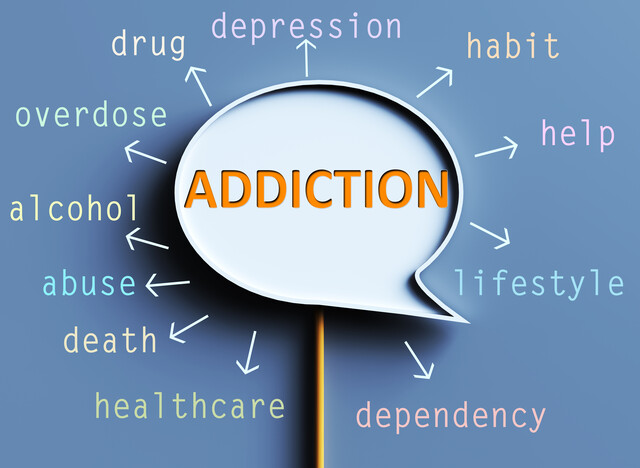Thanks to a rise in usage of certain types of illicit drugs across the country, the discussion about substance abuse has expanded. Officials in government and medical professionals in the health care industry have long since viewed the situation as an epidemic that eventually resurges no matter how many times it is pushed back. The continued effects of substance abuse in recent years has only brought it closer to the forefront of the public's mind. It is a problem that, rightfully, everyone needs to pay attention to.
People who once had no interest or connection to the issues surrounding substance abuse are finding themselves inexplicably drawn into the situation as things escalate. For many people, this is brand new territory that they are unsure of how to safely navigate through. The situation presents additional challenges when substance abuse makes its way into the workplace, bringing in complicated legalities and safety issues that employers and employees alike need to deal with.
What Is Substance Abuse?
Substance abuse is often commonly referred to as drug abuse, where a person is addicted to drugs. Most of the time, people think of illegal drugs like cocaine, heroin, or marijuana when drug abuse is being discussed. However substance abuse can extend to substances like prescription medication and alcohol which can be obtained through legal means for legitimate use. A more accurate definition would be the harmful usage of a substance in a manner that it isn't intended for, with the potential for dependence.
Multiple organizations and medical professionals identify substance abuse as a chronic disease thanks to the physical and mental dependence a person can have in regards to a drug. Repeated usage of a drug can lead to chemical changes in the brain, which triggers dependence and can impact a person's self-control and ability to resist using it. These aspects are why substance abuse involves instances of relapse, where a user resumes usage even if they have gone through treatment and are clean. As a result, the resources for those with substance abuse issues are available throughout their life without any expiration date that may limit them.
The Prevalence of Substance Abuse In The Workplace
Substance abuse does not follow a schedule, which means it is possible that a person who is addicted to drugs or alcohol will bring their addiction to work with them. This means that they may be under the influence of the substance they are addicted to during working hours or they may use while at work. Obviously, this presents a multitude of issues for the person's employer and co-workers, who may be negatively impacted by their substance abuse.
Determining the prevalence of substance abuse in the workplace requires taking a look at some of the information available. An estimated 22.4 million adults (18 years of age and older) in the United States use illicit drugs according to a 2013 survey on drug usage from the Substance Abuse and Mental Health Services Administration (SAMHSA). The study found that the vast majority of those 22.4 million adults were employed, about 68.9%. Also included in the survey were people who were heavy alcohol users and binge drinkers, all adults aged 18 or older. About 12.4 million, or 76.1%, of heavy drinkers and 41.2 million, or 79.3%, of binge drinkers who were surveyed were employed. This included part time and full time employees of varying industries and professions.
While those numbers may be surprising for some, there are additional factors that need to be considered before making your own conclusions. The information in the survey comes from people who have voluntarily admitted that they abuse drugs and/or alcohol; the data may be skewed either way when taking into account people who do not acknowledge or admit their substance abuse issues. Also keep in mind that those under the age of 18, who were excluded from the survey, can have substance abuse issues and be employed. The data does NOT mean that all of the employed users have used drugs or abused alcohol in their workplace while working. It also does not mean that they are not using at work either. You need to understand that substance abuse isn't a guarantee of usage at work even though it may still generate an effect on the workplace.
The prevalence of substance abuse in the workplace also varies by industry. Some industry groups, like food services and construction, have noticeably higher rates of illicit substance usage. By comparison, those in educational services, public administration, and utilities were found to have the lowest prevalence of substance abuse. This may be due to byproducts of the job--overstressed employees turning to illicit drugs or alcohol to cope, for example--or on-the-job exposure to some of those substances. Those who are in food and accommodation service often have ready access to alcohol, which may make it easier for it to be abused.
Lastly, location may have an effect on prevalence. While substance abuse can occur anywhere and affect anyone without bias, it is not unusual for some areas to have a higher concentration of substance abuse issues. This is often due to factors such as population, economics, prevention methods, and education. As a result, businesses in those areas may find that they have a higher prevalence of substance abuse in the workplace than their industry peers. The size of the business may also be a factor, as smaller businesses are less likely to employ drug testing methods due to financial constraints.
Substance Abuse Myths vs. Facts
To an almost disturbing level, there are many misconceptions about substance abuse that people see as fact. The incorrect information presented through these myths generate difficulties for the public. They can negatively impact prevention measures against substance abuse and even make it harder for those affected to seek the necessary help in time. Dispelling some myths can be difficult, as people learn them as fact through multiple sources--like television--and possibly at a young age without any correction. It is best to address some of those long held myths about substance abuse.
-
MYTH: Substance abuse prevents you from being able to hold onto a job--As the data previously mentioned suggests, the long-held belief that addiction is only found amongst the unemployed isn't as true as you would think. While addition can prevent a person from doing their job efficiently, it doesn't mean that they cannot have a job. Addiction isn't cheap, and many users view their jobs as a part of how they can get the substance they are addicted to. The idea may have some connection to another myth: users who are able to go to work are not actually addicted. Denial of one's addiction is incredibly common and many working addicts are considered to be high-functioning addicts compared to their peers who are unable to work while addicted.
-
MYTH: All addicts appear the same--Possibly, due to the concept of the high-functioning addict, there is a stereotype as to what an addict looks like. There's an assumption that addicts appear as minorities, people involved in criminal activity, and people in low socioeconomic conditions. The stereotype also almost always applies to men, even though there are significant rates of female users. Substance abuse is truly unbiased, and can affect a person of any race, economic status, gender, sexual orientation, or ethnicity. It is not uncommon for a person with substance abuse to go undetected because they don't fit the image that many people have of an addict.
-
MYTH: Only illegal drugs are unsafe and can be abused--One of the biggest misconception is that drugs that are legally accessible, like prescription medications, are okay to use because you cannot get addicted to them. Many legal drugs share some of the same properties and effects as illegal ones. In some cases, users who are addicted to an illegal opioid like heroin have turned to pain medications because they are a legally accessible equivalent. Those "safe" drugs are only deemed so thanks to extensive testing and monitoring by the federal government. There are regulations in place to prevent abuse of legal drugs, which is why you may be prevented from getting a refill on a prescription if it's too soon since the last one. In the event that a legal drug is deemed no longer safe, it is usually pulled from the market and adjustments are made to ensure the continued safety of those who legitimately need it. It's not a perfect system, but it is there for a reason.
-
MYTH: Addiction is voluntary--Seeing as many people willingly choose to try an addictive drug, addition is often viewed as a choice as well. While it may begin as something voluntary, it does not remain as such. As discussed previously, substance abuse causes changes in the brain and body on a chemical level that trigger dependence. Those changes are rarely positive and can have a long term effect on a person's health well into recovery. Addiction becomes a compulsion because the person's body and brain have adapted to the substance and now needs it to continue functioning under those changes. Likewise, people also believe that it is easy to stop using so long as you want to stop. The compulsion makes it difficult, and the withdrawal that is usually triggered when a person attempts to stop using can act as a deterrent. By comparison, an addict would view the euphoria that an addictive substance generates in the brain is by far a more appealing alternative to the pain and discomfort that withdrawal generates.
-
MYTH: You cannot recover from addiction--Addiction is referred to as a chronic condition, which means there is the potential for relapse. This is misinterpreted as addiction is a condition where there is no possibility of recovery, which is not true. Although seeking recovery from addiction is no easy task and not everyone is able to recover from their addiction, it is not impossible. Treatment and recovery can take a long time, usually because the damage done to a person's body and mind by the drug can be extensive and that time is needed for them to properly heal. The chances of a person to recover from their addiction and remain sober often are dependent on factors like their ability to adhere to their treatment program, their support system, and the treatment plan itself. The only time when a person is absolutely 100% unable to recover from substance abuse is when they have already passed away, either as a result of their addiction or through an associated complication.
This article serves as an introduction to substance abuse and what you can expect to learn about it. You can expect to learn about the signs and symptoms of different types of drugs, the effects they have on society and in the workplace, potential causes of addiction, and what measures can be taken in response. The resources discussed are not isolated to the workplace, and can be applied to a person's personal life if necessary.
Substance Abuse in Society
The rise in substance abuse has prompted many to view it as an invader into our society. Schools devote class time to prevention programs to keep students drug-free. Governments on the local, state, and federal level have gotten involved through multiple avenues to try to get a handle on the situation. It seems to be constantly present throughout pop culture. Rarely can you turn on the television and not see substance abuse present in some way on the screen--news stations featuring stories on the opioid epidemic, and television shows and movies using substance abuse as a plot point, to name a few. There are songs that mention drugs and drinking in their lyrics. Even books, fiction and nonfiction, have featured stories revolving around substance abuse and its effects.
The fact of the matter is that substance abuse is a part of society whether we like it or not. This article will look at the history of substance abuse and how it is seen from a legal perspective. Once again, understanding the roles it plays in society can help you as you prepare to face substance abuse in the workplace.
The History of Substance Abuse
Many of today's drugs have existed in some way for centuries, used with purposes other than to get high or to fuel an addiction. Some religions used the plants that some drugs are derived from for ceremonial purposes. In those cases, it was used to alter a person's mental state as the ceremony was conducted. As those drugs were primarily used for the purposes of religious practices, and only certain individuals could use them, instances of addiction were rather few and far between. Peyote, a hallucinogen, was and still is used for religious purposes by Native Americans; its usage is legal only when used in legitimate religious ceremonies.
The precursors for modern illicit drugs were also once used as medicine. Opiates, which affect the pain receptors in the brain, have long been used for medicinal purposes in varying forms. Derived from the opium poppy, opiates were presented as the key ingredient in many early painkillers. Laudanum, for example, is a painkiller where opium is mixed with a solution of alcohol. While it is still used today for medical purposes, the opioid drug morphine was once at the heart of one of the biggest substance abuse epidemics. During and after the American Civil War, morphine was prescribed to soldiers who had suffered debilitating pain from injuries or amputations. Many people became addicted, as morphine dosages to begin with were not as closely regulated as they are today.
Modern illegal drugs like heroin and cocaine were once commercially available as popular additives in variety of products, ironically, as a means of combating morphine addiction. Heroin was originally created as a less-addictive alternative to morphine; unfortunately, heroin has double the potency as morphine and its introduction to the public generated an even worse addiction epidemic. Opioid drugs like methadone, oxycodone, codeine, and others commonly used today were also synthesized with the intent of making a less-addictive opiate, most of which had similar results.
Many people have heard stories about how Coca-Cola once had cocaine as one of its primary ingredients--it was inspired as an alternative to creator Dr. John Stith Pemberton's French Wine Coca, a wine-cocaine beverage that was banned in dry counties in the United States pre-prohibition due to its alcohol content. Pemberton, also a morphine addict, was inspired after seeing the success and acclaim of chemist Angelo Mariani's similar concoction Vin Marian in Europe. Since cocaine was used commercially in small amounts, it took longer for people to notice that it, too, had addictive properties. Many products geared towards infants and children for problems like teething pain contained cocaine, and parents were often encouraged on their usage by doctors. Until cocaine was made illegal in 1914, it had common usage in surgery, therapy--Sigmund Freud was a major fan of the drug and recommended it to nearly everyone he knew in dangerously high dosages, resulting in wide spread addiction and several deaths--and over-the-counter remedies like cocaine-infused toothache drops.
Most non-opioid drugs did not see much widespread usage or addiction until the late 19th and 20th century. There are references to medicinal uses for marijuana that are thousands of years old in Asia and Africa, and in Europe around the 16thcentury. Plants that are in the same scientific family as marijuana, like hemp, seemed to have a large presence in society but in an economic capacity rather than a medicinal or recreational one. Hallucinogens, many of which are present in the form of thousands of plant and fungi species, have a similar history. Pinpointing instances of hallucinogens being used in an addictive or harmful manner before LSD came into usage in the 1905s is difficult because of a lack of documentation.
Alcohol addiction is a substance abuse issue that has a long documented history, with much of it intertwining with opioid abuse because of their frequent combination. Many governments and communities recognized alcoholism as a problem long before they recognized other addictive substances. Efforts to curb alcoholism, however, failed to be effective and the only thing that seemed to consistently work were taxes on alcoholic products. In the United States, the temperance movement that led to prohibition was largely the biggest and most effective attempt at regulating alcohol to prevent addiction.
There were few ways that substance abuse was dealt with on a large scale for many years. For many years, addiction was blamed on a lack of willpower and blamed on the person rather than the drug itself. It wasn't until the late 18thcentury that anyone really began to view and treat addiction as a disease, with American Dr. Benjamin Rush being one of the first to propose the idea. As members of the medical community and of the public began to take addiction more seriously, the availability of treatment and rehabilitation programs increased. Addiction and substance abuse were seen as mental health issues, with many asylums and mental health hospitals offering treatment in that regard. In 1935, Alcoholics Anonymous (A.A.) was started and provided a recovery model that many groups today now use.
Stigma surrounding drug and alcohol abuse still remained, as it does to some degree today. For many years, it was deemed shameful to even admit that you were struggling with addiction and needed treatment. Many celebrities who had their drug and alcohol use made public effectively saw their careers ended or grievously harmed as their fans turned against them. During Hollywood's Golden Age--roughly the 1920s through the 1960s--studios would turn against their actors for having their addictions publicized, even though the same studios had forced legal and illegal drugs on their actors as a means of controlling them. Advocacy from members of the public, like Former First Lady Betty Ford, in the latter half of the 20th Century helped destigmatize addiction and curbed some of the shame that kept many addicts from seeking help.
Today, drug and alcohol addiction and abuse is treated as a serious condition in the United States. Research, funding, and care is set aside specifically for the treatment and prevention of substance abuse. There are now thousands of rehabilitation and treatment programs all over the country. Even though there are now more varieties of illegal and legal addictive substances, more is being done to regulate and keep them from being abused by the public. Action is being taken to deal with the problem of substance abuse.
From A Legal Perspective
When discussing substance abuse, the laws and legalities associated do come up. Many of the laws in place surrounding drugs and alcohol control their usage, distribution, and classification. Laws related to illegal drugs are present on the federal, state, and local levels, but largely are similar across the board. Any laws related to legal substances, like over-the-counter medications and alcohol, are typically age-dependent, and vary by state.
In the United States, the classification of drugs and alcohol falls under the control of the Drug Enforcement Administration (DEA) and the Controlled Substances Act (CSA). The CSA is a federal law that regulates drugs and other substances by placing them into five schedules or categories. How a substance is controlled and then scheduled is determined by the following factors:
-
The liability of dependence, either physical or psychological. This may be determined through testing, comparisons to similar drugs, and/or through data analysis of the drug's existing usage.
-
The potential for abuse. This can be determined the same way as the drug's dependence.
-
Evidence of pharmacological effect. This may or may not be known.
-
Any and all scientific knowledge of the drug, including its history and existing patterns of abuse (if any). If there is existing abuse of the substance, that is also analyzed in regards to its duration, scope, and significance.
-
Any and all risks to public health that the substance may pose.
-
If the substance is a precursor of any substance that is already controlled and categorized into a Schedule.
The decision to alter a substance's scheduling in any way usually falls under the control of the DEA or the Department of Health and Human Services (HHS). In addition to the DEA and HHS, changes can be made by medical or pharmacy associations, drug manufacturers, public interest groups, other government agencies (local, state, and federal levels), and individual citizens via the submission of a petition. The petition will be reviewed and the substance reanalyzed before any changes are made.
The five Schedules and their corresponding classification requirements:
-
Schedule I--Substances that are categorized as Schedule I typically have zero medical application, have highly addictive properties, and have a high potential for abusive usage. The drugs that most people think about when it comes to illegal drugs are usually Schedule I. They include LSD, ecstasy, and heroin, to name a few. Marijuana, even though there are those that advocate its usage for medical purposes and several states have legalized it as such, is deemed a Schedule I drug.
-
Schedule II--Many Schedule II substances meet similar qualifications as Schedule I drugs do, but some have a medical purpose. They are still considered extremely dangerous, as they still have a high abuse-potential and can cause severe physical and/or psychological dependence. Examples include methadone, oxycodone (OxyContin), Adderall, Ritalin, and fentanyl. Cocaine and methamphetamine, which have no medical value, are also Schedule II drugs. Any drugs that include 15 milligrams of hydrocodone per dose, like Vicodin, fall under this category as well.
-
Schedule III--A Schedule III drug still has the potential for abuse and dependence, but it much lower compared to drugs in Schedules I and II. As the middle tier in the Scheduling, most of the substances in it are viewed as being in the middle in terms of abuse potential and usage. Steroids, ketamine--which is used more in veterinary practices--and testosterone are examples of Schedule III substances. Also included are substances with dosages that contain 90 milligrams or less of codeine, such as some variants of Tylenol.
-
Schedule IV--Schedule IV substances have a low potential for abuse and an equally low potential of dependence. However, that does not mean that their usage carries no risks whatsoever for dependence or abuse. Drugs like Xanax, Valium, and Ambien are classified as Schedule IV substances.
-
Schedule V--Most Schedule V drugs have a very low risk of abuse or dependence. Substances that are Schedule V can contain narcotics that are found in the other Schedules, but they are usually in such a small dosage that it's difficult to abuse without buying mass quantities. The majority of over-the-counter medicines fall into Schedule V. They include cough medicines, antidiarrheal medications, nasal sprays, and so on.































